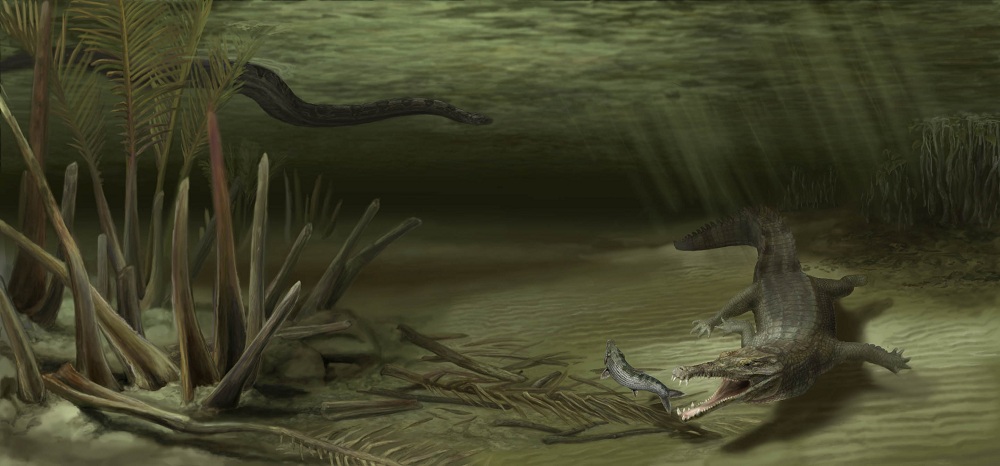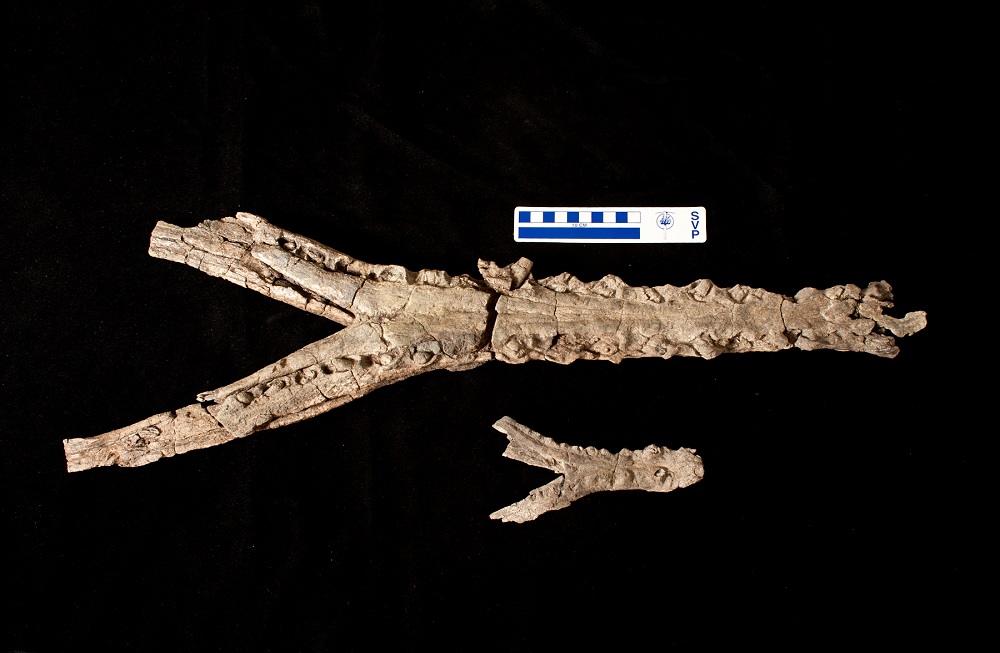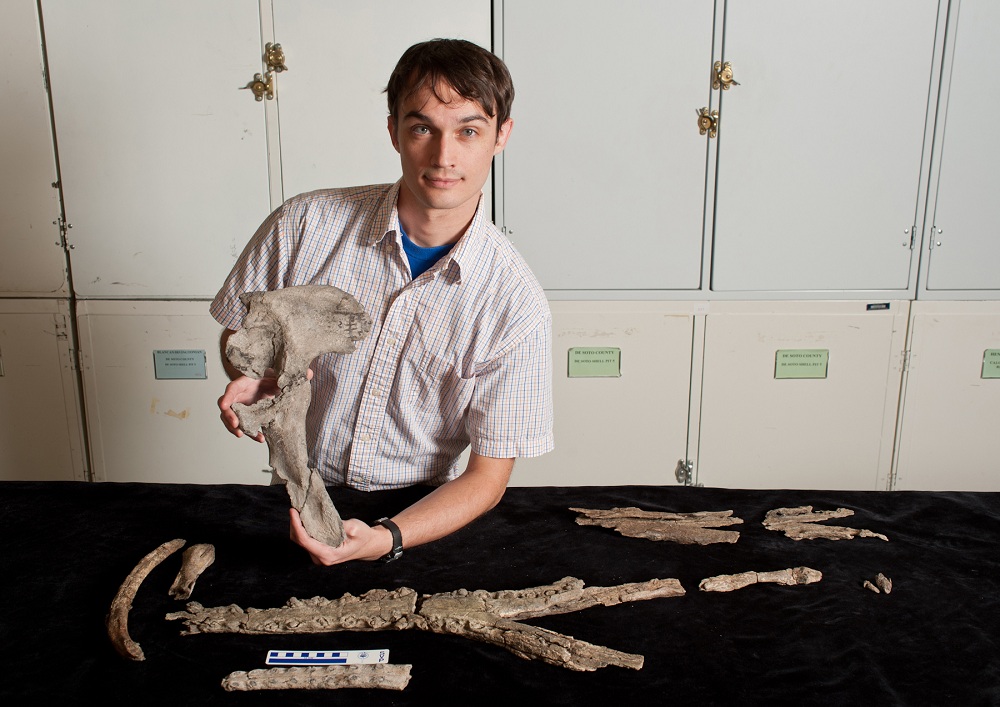Battle of Ancient Beasts: Huge Crocodile vs. World's Largest Snake

In what might seem like a scene from a monster movie, an ancient 20-foot crocodile and the world's largest snake may have battled it out in Colombian forest rivers 60 million years ago.
The new crocodilian was discovered in a Colombian coal mine, the same area where the large snake fossils were discovered. The animals would have lived in freshwaters in the ancient rainforest ecosystem, an adaptation that seems to have come with the changing climate after the extinction of the dinosaurs. [Alligator Alley: Pictures of Monster Reptiles]
"In order to survive these hard times, the best survival tool is having the ability to adapt, being able to inhabit lots of different habitats in order to change areas and take advantage of resources that others can't," said lead researcher Alex Hastings, a graduate student at the Florida Museum of Natural History and the University of Florida department of geological sciences. "They were able to inhabit new territories, whereas crocodile groups which tend to be much more secluded, didn't have the adaptability to survive tough times."
How the crocodile adapted to the warmer temperatures can enlighten scientists as to how species might change in response to shifting climate and invasive species in today's world, Hastings said.
Crocodile versus snake
The crocodile itself, which the researchers have named Acherontisuchus guajiraensis, is the first land animal from the Paleocene New World tropics that is specialized for eating fish. It has a long and narrow snout full of pointed teeth, which would have been perfect for hunting large lungfish and other bonefishlike fish. It also had a specially adapted skull that enabled it to quickly snap its jaw closed on passing fish. [See images of the new crocodilian]
The creature may have been similar to modern crocodiles that are adapted to fish-eating, like the gharial crocodile in India. These ancient crocodiles aren't related to their modern relatives, though; they were a cousin lineage that has since died out.
Get the world’s most fascinating discoveries delivered straight to your inbox.
The crocodile would have been competing with the Titanoboa for this food source, but the boa may have also been its predator. Small crocodiles would have been the perfect meal for this monstrous snake, the largest of which reached a length of 42 feet (more than 12 meters).
"The young crocodile needs to keep an eye out for this big snake, because the snake could just as easily go for the young croc instead of the fish," Hastings told LiveScience. "Once they hit adult size, they are pretty safe; it's a matter of getting there."
Surviving extinction
A. guajiraensis is a new species of dyrosaurid, a species once believed to inhabit mostly ocean habitats. This new specimen shows that some species in this group spent most of their lives in freshwater habitats. Specifically, this animal would have lived in a wide river that emptied into the Caribbean.
"There are adaptations in the skeleton that are conducive to that new habitat, that low-energy freshwater environment as opposed to the habitat of the coastal ecosystem," Hastings said. "The grown-ups are inland as well."
These dyrosaurids survived the extinction event that killed the dinosaurs and many other large marine reptiles. Researchers believe that its ability to adapt to these freshwater rivers and new food sources would have been instrumental to their survival and spread from Africa to the Americas.
The study was published today (Sept. 14) in the journal Palaeontology.
You can follow LiveScience staff writer Jennifer Welsh on Twitter @microbelover. Follow LiveScience for the latest in science news and discoveries on Twitter @livescience and on Facebook.
Jennifer Welsh is a Connecticut-based science writer and editor and a regular contributor to Live Science. She also has several years of bench work in cancer research and anti-viral drug discovery under her belt. She has previously written for Science News, VerywellHealth, The Scientist, Discover Magazine, WIRED Science, and Business Insider.





